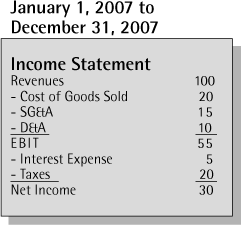Depreciation
As the lemonade stand case showed, depreciation expense simply allocates the costs of the original purchase of fixed assets over their useful lives (Exhibits 7.3 and 7.4) and is a noncash expense; that is, it does not depict any actual cash outflow (payment).
| The Lemonade Stand Revisited | |
|---|---|
|
|
Year 1
|
|
Year 2
| |
Year 3
|
Get Crash Course in Accounting and Financial Statement Analysis, Second Edition now with the O’Reilly learning platform.
O’Reilly members experience books, live events, courses curated by job role, and more from O’Reilly and nearly 200 top publishers.



